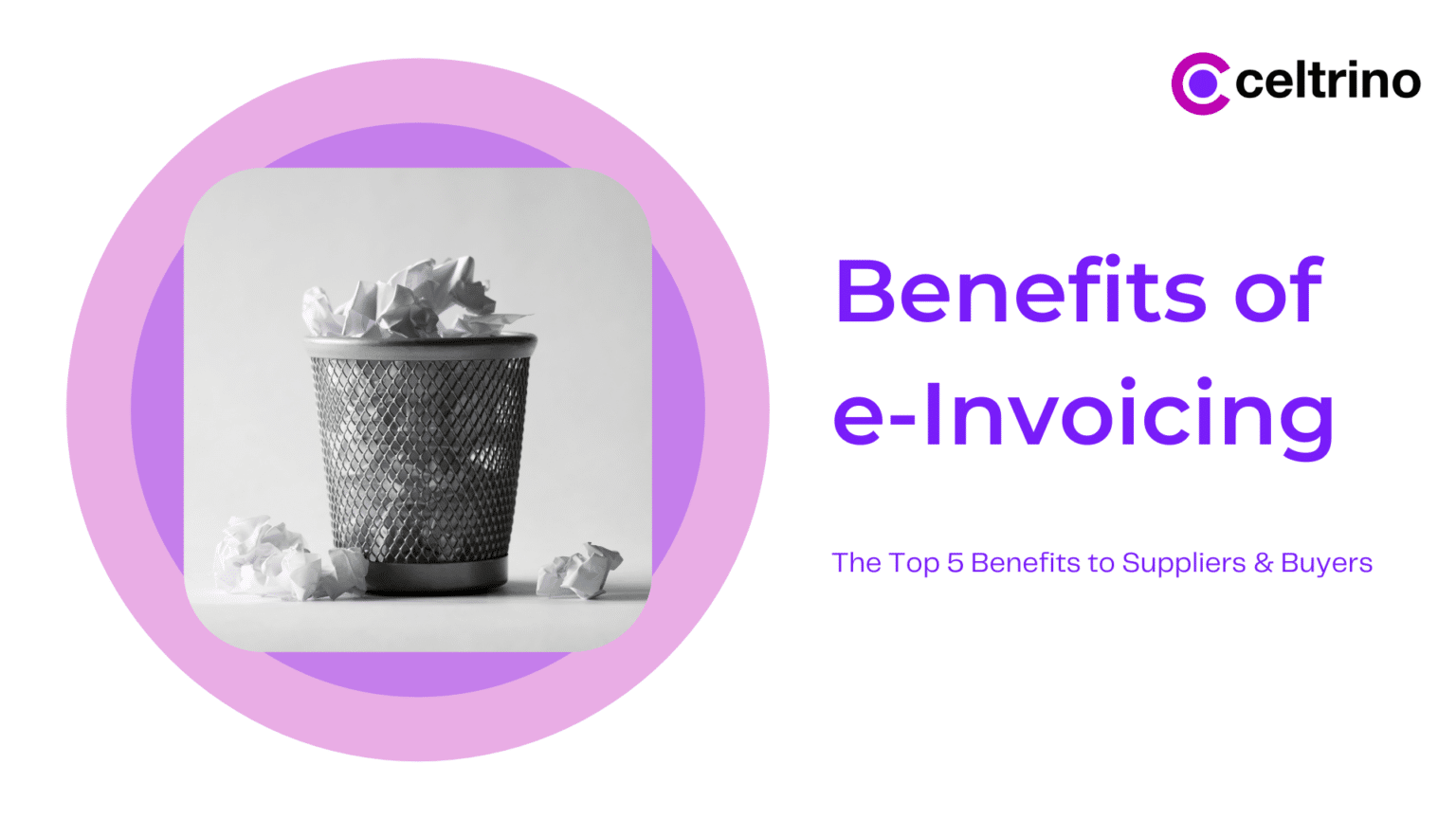EU Directive 2014/55/EU mandates public bodies to be compliant to receive and process invoices from their suppliers in a standardized electronic format
Electronic Invoicing, (e-invoicing) is a modern replacement for transmitting traditional invoices in a standardized electronic format. The EU Directive 2014/55/EU mandated that all public bodies should have the ability to process and receive invoices from their suppliers electronically. In Ireland, since April 2020, all local government and public sector bodies must be able to send and receive invoices this way too.
It’s become apparent in recent times following the COVID-19 pandemic that e-invoicing plays a crucial role in keeping businesses across the world productive and operational even when postal and delivery services may be interrupted. Additionally, the negative impacts of paper production on our climate are profound, and so it makes sense in more ways than one for both suppliers and buyers to start planning for the digitisation of their key business documents.
According to Billentis, the volume of European invoices sent electronically in 2019 increased by about 55% from 2018 due to the directive, and continues to increase. There are over 150,000 e-invoice receiving organisations connected across 20 Euro countries, plus Singapore, Canada, USA (Source: DIGIT).
It’s clear now more than ever that it is becoming increasingly important to adopt e-invoicing practices in all areas of business. Below, we have compiled the Top 5 Benefits to both Suppliers and Buyers that E-Invoicing provides.
Top 5 Benefits to Suppliers
Improved relationships with your customers
Electronic invoicing allows suppliers to easily monitor what stage in the approval process an invoice has reached at any given time, leading to a more streamlined and transparent invoicing process.
As a result, this provides suppliers with reassurance that their invoice is being handled efficiently and it also leads to less invoice status queries with customers.
Faster payments and more reliable cash flow
Automating the invoice process eliminates payment delays as data is immediately available electronically in buyers’ back-office systems. As a result, invoices can be paid on time, and suppliers can forecast cash flow with greater accuracy.
Reduced costs
According to EESPA, the cost of processing a paper invoice can be close to €13 to the supplier. Depending on the level of automation, the net benefits can be savings of between €4 – 12 per invoice. An estimated €920 million in savings has already been recorded over the last three years through e-invoicing.
Many users have been able to reduce invoice processing costs by 50-75%, with a return on investment of over 60% per annum.
Cost savings mainly arise in the form of reductions in labour costs – that typically come in the form of printing and posting invoices as well as manually following up with customers to clarify invoice status.
Fewer rejected invoices
E-Invoicing enables straight-through processing directly through to your customer’s back-office system. Buyers no longer need to manually enter invoice data, leading to fewer clerical errors. As a result, invoices are less likely to be rejected and customers can process them – and send payment – without delay.
Increased productivity
E-Invoicing provides suppliers with full visibility of invoice status in real-time, reducing the need for status queries. Suppliers also spend less time printing physical copies of invoices and posting them to customers. Automating the process ensures invoices are fully authentic and also leading to a reduction in invoice disputes.
Top 5 Benefits to Buyers
Increased accuracy
For paper or PDF invoices, the documents must be stored, sorted, and re-entered into an accounting system. These steps are time-consuming and having to re-input data into multiple locations leaves them prone to error.
E-Invoicing not only allows for fewer mistakes to be made when an invoice is in transit; it also can work with accounting systems automatically which eliminates data re-entry and improving their overall accuracy.
Reduced risk of fraud
Since e-invoices are encrypted before being sent and can only be decrypted by an authorised system user, the risk of invoices getting into the wrong hands is greatly reduced. There is also no risk of sending a confidential invoice to the wrong person; as with emailing PDF invoices.
Reduced costs
Thanks to the reduction, or even complete elimination of manual data re-entry, sorting, validation, and registering of invoices, e-invoicing can deliver substantial cost savings when compared to traditional methods.
Many users have been able to reduce invoice processing costs by 50-75%, with a return on investment of over 60% per year.
Focus on higher-value activities
Thanks to the need for data re-entry and filing to be performed on paper or PDF invoices being eliminated, your employees can be redirected to more important tasks which need attention. This can improve the productivity of your business while also giving employees more meaningful tasks to perform on a daily basis.
Improved supplier relationships
A quick and effective payment system will undoubtedly aid in the strengthening of supplier relationships. This will result in a more efficient supply chain and higher levels of customer satisfaction from your end.
The Celtrino Offering
At Celtrino, we offer e-invoicing solutions to our clients through our PEPPOL Connect e-document portal. This allows suppliers and their buyers to exchange invoices, credit notes, purchase orders and other documents in a common format over the PEPPOL network.
We have over 30 years’ experience in providing EDI invoicing solutions to our clients, so why not click the button below to Contact Us today to learn more about how we can assist you with all your E-Invoicing needs.


